Translations 677
The Imperial Triumvirate of War
The Imperial Triumvirate of War
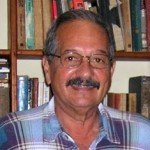
By Manuel E. Yepe
http://manuelyepe.wordpress.com/
Exclusive for the daily POR ESTO! of Merida, Mexico.
A CubaNews translation. Edited by Walter Lippmann.
In the midst of so many terrible things happening in the world, it’s easy to be depressed by the torrent of bad news generated by the Trump administration in foreign policy matters.
Resistance to the edicts of the U.S. Empire is growing daily. We see it in the reactions towards the trio of idiots who make up the Triumvirate of War: John Bolton, Mike Pompeo, and John Pence.
Trump’s government has abandoned diplomacy to such an extent that only their crude and naked aggressions are evident. And it has gotten to the point that even the most accomplished diplomatic agents of Washington seem to have dispensed with subtleties as part of the tools of their profession.
Only the Russian Foreign Minister, Sergei Lavrov, continues to speak in classical diplomatic language.
In his annual address to the diplomatic academy in Moscow, the Russian Foreign Minister hailed a new geopolitical era marked by multi-polarity. Lavrov explains that the emergence of new and rising centers of power to maintain stability in the world requires the search for a balance of interests and commitments.
He said that there has been a change in the center of global economic power from the West to the East and a markedly globalizing liberal order started losing its attraction and is no longer seen as a suitable model for all.
“Sadly, our western partners, led by The United States, do not want to agree on common approaches to resolve problems,” Lavrov said, accusing Washington and its allies of trying to “preserve their secular dominion of world affairs despite objective tendencies towards the formation of a poly-centric world order.”
He argued that these efforts were contrary to the fact that now, economically and financially, the United States can no longer solve the economy problems and other world affairs single-handedly.
“To fictitiously maintain its dominance and previous positions, Washington resorts to blackmail and economic coercion, making use of the media,” says Lavrov.
There is much to be drawn from this statement, which was published in Newsweek and many other media without much editorial comment.
Lavrov said he understands the conflict in its entirety and its depth in the psyche of US and European leadership, considering the feeling of ownership that does not abandon them.
This is what explains the intensification of aggression on the part of the Trump administration on the world stage.
Meanwhile, fear grows in the western halls of power.
Countries like Iran, Lebanon and Russia can do simple things like getting together to sign some kind of contract on oil exploration, or railroad financing, and the United States will freeze it out of the global financial system.
That is why the ultimate goal of this resistance is not a decisive and satisfying victory for all, but to survive long enough so that the opponent finally has no choice but that of stopping and going home.
Secretary of State Mike Pompeo travels the world like a mobster. He lies about all matters and demands allegiance, but goes away empty-handed. Blackmail only works with the weakest and most isolated, like Ecuador, where what was at stake was “only” the life of Julian Assange. Ecuador is about to discover how expensive the generosity of the United States and the IMF are.
Such was the essence of Pompeo’s statement on the destabilization of Venezuela by China. It’s also why Maduro refused US and IMF aid, and why he had to pay for this with the destabilization of his country, through sanctions, threats and blackouts….
No wonder the ambassador of China in Chile exclaimed: “Mr. Pompeo has lost his mind.”
For Trump’s foreign policy team, the moment of truth is approaching. Will they start a war with Iran at the instigation of the newly re-elected Benjamin Netanyahu?
Empires don’t like to be disrespected; less still to be ignored. Therefore, there seems to be no possibility that Trump’s plan may work. The axis of resistance, despite all the small moves, is to win the war of attrition. The U.S. maximum pressure policy has a finite lifespan, because –like all things in economics– it has a temporary function.
And every small movement, every action big or small, whether in response to sanctions or behind-the-scenes pressure, changes the state of the conflict. And it is not in the nature of the people behind Trump’s policies to admit failure. They will continue to push until there’s a catastrophic outcome.
April 24, 2019.
This article may be reproduced by quoting the newspaper POR ESTO as the source.
Interview with Yunier Mena
Interview with Yunier Mena, young Cuban communist
By Ubaldo Oropeza, Centro de Estudios Socialistas Carlos Marx
May 18, 2018
Translated and edited by Walter Lippmann for CubaNews
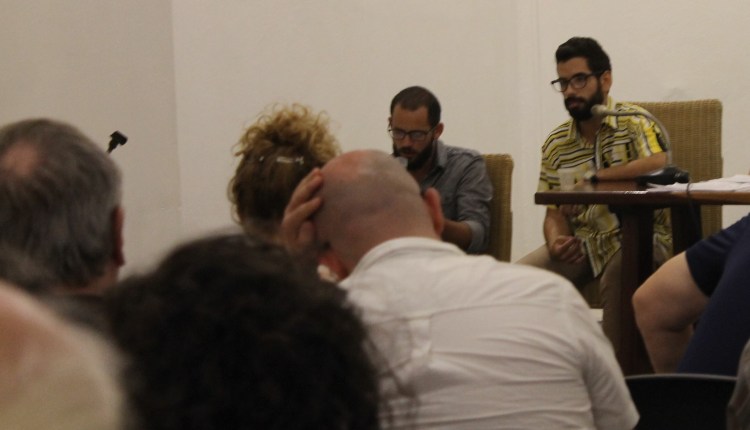
Yunier Mena is a young Cuban student who attended the León Trotsky International Academic Event held in Havana from May 6 to 8 of this year.
Ubaldo Oropeza (UO) – First of all, I would you like to know what you thought of the meeting about Trotsky?
Yunier Mena (YM) – What I liked most about the academic meeting about Trotsky was the fact that I felt among communists, apart from the profound and just ideas I could hear.
UO.- I have noticed, since my previous visit to Havana, that now there is a different atmosphere, a lot of business, a lot of shopping, a very strong market environment, I imagine that, as you say: “feeling among communists”, is like breaking with something that has been growing in Havana.
YM.- In Havana and throughout the country, even in the Constitution of the Republic, there is an advance of capitalism, in my opinion. There is private property, money, and goods that do not come commonly through the channels of the State enter the country and this creates a mercantilist and unpleasant situation in the country.
UO.- As a young person, do you think that young people are inclined to capitalism, to pay more attention to consumption than to understanding what is happening?
YM.- There is everything, because reality is very complex, there are young people who don’t have a political thought, most of them into circus and bread. But there are young people who think about these issues, there are many who don’t say it, but surely very soon they will say it.
UO.- I’m asking you that because when the Soviet Union fell many young people were inclined towards capitalism. As you say, in the youth there is everything, but the great majority has been depoliticized. Besides, the vast majority of the youth, the only thing they knew about socialism was the iron grip of the bureaucracy. The old revolutionary traditions of Lenin’s and Trotsky’s time were forgotten and distorted. What do you think of this situation, that at a time when youth have to choose capitalism or a planned economy, where they would turn?
YM.- The youth and the majority of the people believe that capitalism is what is good, is natural, what works best and has taken man further. There is an imposition on people’s consciousness, on people’s criteria of a supposed success of capitalism, the economic success of capitalism. This is happening outside of Cuba and Cuba is no stranger to it.
UO: At a time when private property is advancing and the market is advancing, that false certainty of the people about the supposed success of capitalism is being reinforced.
The confidence that now exists in capitalism, what is the reason for this? I think there are two factors, on the one hand the control of the government bureaucracy, which eliminated workers’ democracy, direct participation in the decision-making of the working class, and on the other hand, the economic blockade that prevented industry from developing, and of course, the isolation of the revolution.
YM.- People’s support for capitalism has to do with several questions, on the one hand, capitalism itself, how it works, its human relations, its cultural and ideological dominance makes people think that it is the only thing they can have and aspire to. There is an ideological domain that makes people support capitalism. They think that society can only function that way. The apolitical nature of young people is due, on the one hand, to this natural reproduction of capitalism in the ideology of people who participate in economic activities and relations that have to do with capitalism.
Che said that man changes while reality changes, I agree with him, I think that the state that functions vertically cannot lead us to socialism, because man does not decide for himself, does not construct reality by himself and cannot transform himself. This apoliticism cannot be transformed until man is directly responsible for his future. Until the decisions that are taken are taken by the same ones that fall the results of that decision.
UO.- Finally, there is a very complex situation at the moment because the policy of American imperialism is being very aggressive in Venezuela, trying to hang the revolution that overthrows Maduro. It also has it with Cuba, even a few days ago the so-called Helms-Burton law has been retaken which proposes restricting the sending of money to Cuba to a maximum of $1,000 every three months, lawsuits by capitalist companies that were expropriated in the revolution, there is talk of a total blockade. There are complicated periods in sight for Cuba. What do you think the youth have to do, like you, who think that capitalism is not an alternative and at the same time opposes any imperialist intervention?
YM.- I think that we have to fight without fear against imperialism and against the bureaucracy that prevents socialism from advancing. What is needed is for people to build their own reality. We must consciously oppose capitalism, confront imperialism.
One of the things I sensed in the meeting about Trotsky’s ideas is that we are not alone. That there are people in different parts of the world who oppose capitalism. The support that Cuba and socialism has in Cuba was also shown. I think that it is important to defend Cuba and that we Cubans know that we are not alone, there are many people in the world who support us.
This socialism has many problems, but it can be improved and not go to capitalism. The possible socialism that we need is not the one that asks for capitalist participation, like private property or organized production over workers. We have to satisfy collective needs, we have to produce wealth organized by the workers themselves.
I think that this country needs to produce wealth, and this wealth is not produced by capitalism. We can produce wealth in a socialist way and distribute it better and discourage ourselves. Not to fall into the game of capitalism, capital is not interested in collective human development. Only democratic and productive socialism can promote solidarity and human development.
“Trotsky will walk in Cuba”

“Trotsky will walk in Cuba”
Interview with Frank García Hernádez
By La Izquierda Socialista
Translated and edited by Walter Lippmann for CubaNews
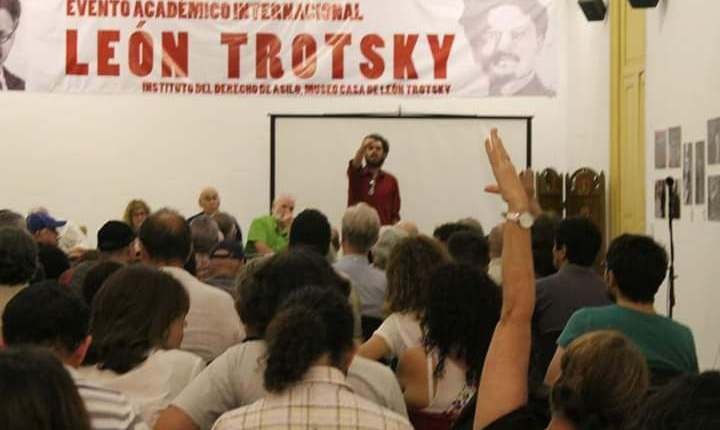
Interview with Frank García Hernández, Cuban intellectual, organizer of the First International Academic Event on Leon Trotsky, in Havana.
The Socialist Left (LIS): Would you like to tell me your impressions of the Trotsky meeting we just had?
Frank: I never imagined it was going to be so shocking. When it was over, just before the event ended, I noticed so many good intellectuals, including Robert Brenner, Paul LeBlanc, Gabriel García, Helmut Dahmer, Eric Toussaint, people who unfortunately don’t know each other in Cuba -except for comrade Eric- but who are excellent academics.
Almost 10 Trotskyist tendencies were present – who were not invited as such, all the exhibitors representing universities, institutions and academic journals came – and there was no clash between them. They sat at the same table, even though they have big political differences. And at the end, at the end of the last day, comrade Rob Lyons raised his left fist and began to sing The International. He could hardly continue, many did not know what to do, but later other voices joined in, and all of them: in Iranian, Indian, Turkish, Italian, German, French, Spanish, Portuguese the International was sung. And in a few minutes, we lived the World Revolution in that small hall. Then I realized something very important: Cuba, 60 years later, is still a revolutionary meeting point.
The event had a very great reception at a global level, a participation of academic institutions, of organizations like yours. The International Marxist Tendency was one of the first to reach out to us when the meeting was just an idea, a very big thank you to you who in record time published the book The Revolution Betrayed in order to bring it to Cuba: you will have the merit of being the ones to blame for reading it. We are also very grateful for the text by Alan Woods In Memory of Leon Trotsky, a basic text and therefore very useful for Cuban youth who still do not know it. In addition, the IEPC helped us a great deal by making it possible, thanks to comrades Pablo Oprinari and Sergio Moissen, to present the title of Trotsky Escritos Latinoamericanos. But it is very important to talk about the Leon Trotsky House Museum. So much so, that’s why I mention them last: so I can stop at them with more force. The compañera director: Gabriela Pérez Noriega, always wrote to us and asked us: “What can we help you with? To each one of the requests we made, she answered affirmatively. She never put a but, rather, she had such beautiful initiatives as bringing the first photographic exhibition on Trotsky that is exhibited in Cuba. And thanks to them, Santa Clara and Havana will be flooded with T-shirts with Trotsky’s image. Trotsky will walk in Cuba.
LIS: The meeting is very significant precisely because it is being held in Cuba, at a time when the revolution is being besieged by American imperialism: Trump’s speeches have been quite harsh in the last period asking Cuba to take its hands off Venezuela, if it doesn’t it is going to have very harsh repercussions for the island. Trump still thinks Latin America is his backyard. It is a fundamental task of a Marxist revolutionary to defend the conquests of the Cuban revolution from any imperialist attack. On the other hand there is a situation that strikes me, the situation inside Cuba has changed rapidly in recent years, particularly in Havana, there are hundreds maybe thousands of new businesses, it seems that a new class is forming, what do you think of this?
Frank: First I would like to say something, even if it has nothing to do with the event. The measures that Trump is taking against Cuba are not exactly a result of what is happening in Venezuela, but this president has had a term with terrible results. He has not put a brick in the wall he had promised on the border with Mexico, the economic war with China has not brought him economic dividends but only losses, his economy has not grown, he has fought with his best allies in the European Union. He knows that by trying to apply the Helms-Burton law he will win votes in the Cuban electorate in Florida, which weighs heavily in the presidential election.
Second, which has to do with the event, is the Cuban situation. We are learning to live with private property – class struggle through -. Some want us to live peacefully with private property and accept it as such. Even if we do, the class struggle runs through us.
The bourgeoisie is born with its media, its cultural policies, its consumerism. The prices of goods -due to the fact that they are quite deregulated in the capital- soar, since the bourgeoisie needs, in order to maintain its business, to consume more than what the working classes consume. The impact is even harder because the businesses that these class controls are essentially in the service sector. This leads to food hoarding and therefore: shortages. Something that does not happen in other regions of the country, like Santa Clara, because the bourgeoisie is more controlled by the government and there is less concentration of wealth.
But comrade Yunier Mena, a Cuban speaker at the event, a philology student, rightly affirms that, more than economic strength, the bourgeoisie has strength in its ideological impact. I explain why: they present themselves as successful Cubans, concerned about culture, animal rights, the LGTBIQ community; they appropriate a good part of civil society, they speak on its behalf, they present themselves with a renovating discourse, they say they are not interested in politics and that they are misunderstood by the Communist Party, they emphasize that they are Cubans and nothing else. The result: The society, mainly the Havana society, ends up admiring them.
On the other hand, the party doesn’t know what to do. It stimulated, propitiated and guaranteed the birth of this new – old – class. It does not fight them because they believe that the class struggle is to divide the people. They forget Fidel’s stance – which kept the bourgeoisie weak: he warned them again and again that they were the fruit of a provisional economic policy. Now, the new Constitution, while insisting on the construction of a communist society, gives constitutional guarantees to their form of property: private property, which is established and exists thanks to the exploitation of human beings by human beings.
I am sure that all this caught the attention of so many participants. Only as an audience did I receive the request of 192 people to attend the meeting; if all the exhibitors had attended, there would have been 51. If I had had a larger logistic structure, I would have gladly accepted it all.
What hurt me the most is that there was not much Cuban public because the event was not publicized, but what I like the most is that all Cubans who were at the event have taken with them a copy of The Revolution Betrayed.
LIS: Victor Hugo once said that when an idea has its moment, nothing can stop it. It seems to me that, as you say, although there was little diffusion of the event, Trotsky’s ideas and thought will have an impact on the next period here. We can’t say that this is the first time Trotsky has been known in Cuba, previously there were groups calling themselves Trotskyists that participated in the different revolutionary processes in Cuba, however, now the reappearance of this figure is given a very significant moment, capitalism is in a dead end, it offers nothing to youth, women and the working class. What can you say to the youth and workers about Trotsky’s figure and its impact on Cuba?
Frank: When ideas start, there’s no one to stop them, that’s very true. I want to limit something, it’s not surprising that Trotsky’s reception in Cuba is so good, what’s surprising is that Trotsky didn’t arrive sooner.
This return of Trotsky to Cuba can never be compared to his arrival in the year 32 when Juan Ramón Breá and Sandalio Junco brought him in a suitcase. We were talking, at the time, about a capitalist society in crisis, involved in a violent class struggle against a murderous dictatorship and with a people with a literacy level of less than 50%. That first Trotskyism gradually disappeared. After the decade of the 1950s, Cuban Trotskyism never surpassed 50 militants, almost always entrusting other organizations as tiny as them. When the Revolution triumphed, they were suffocated, not only by the persecution of the Popular Socialist Party, but also by the major events that were taking place. The working classes paid more attention to the attacks of imperialism and internal counterrevolution than to the controversies, complex for them, sometimes even extemporaneous, between Trotskyism and Stalinism.
At the same time, since the 1960s a critical, heterodox Marxism was fostered in Cuba, which was censored in the 1970s, but after the fall of the Soviet Union, it reappeared with tremendous force. That Marxism has stagnated a bit. It needs more theory. Where there is a great setback in the assimilation of Marxism today is in the university student body. They continue to identify it with the official discourse. That is why Trotsky, who is not present in the study programs, is so attractive to them. This already happened in the 90’s with Gramsci and it was tried to happen with Rosa Luxemburg but it did not bear fruit. 60 years of revolution, in spite of all the errors, completely transform the mentality of society. One of Fidel’s main achievements is that he was in charge of disengaging society by constantly offering culture as an emancipatory instrument. This approach to Trotsky starts from a Marxism already studied and assumed, something that will avoid any sectarian position.
In Santa Clara, a study circle composed of university students called Cuban Communist Forum has already arisen. They have a Facebook page and I call on the world militancy to show solidarity with them by sending them magazines and bibliographies of thinkers such as Daniel Bensaid, Pierre Broué, Isaac Deutscher, Ernest Mandel, Victor Serge, Alex Callinicos, Cornelius Castoriadis, Alan Woods, Tariq Ali, Michael Löwy… They urgently need theory. See if it is important to help these students, who as soon as they returned to Santa Clara began to spread the bibliography they brought and, as I already told you, especially The Revolution Betrayed, the short biography of Alan Woods and another text, also biographical, authored by Esme Choomara, in addition to some explanatory brochures of the Permanent Revolution provided by Paul Le Blanc. These young people are not organized as a political group, they are not interested in doing so. They are born as a circle of study and debate. They do not claim to be Trotskyists, but communists. They understand Trotsky as part of a system of ideas in which Marx, Engels, Lenin, Rosa Luxemburg, Mariategui, Gramsci, Che Guevara, Fidel.
Trotsky returns to Cuba, to the Cuban revolution 60 years later and the situation is completely different from when he came with Junco and Breá. The analyses being done now are neither extemporaneous nor supranational. Trotsky does not land in a quagmire. There was already a knowledge of him; in November 2016 a postgraduate course on his life and work had been given. This course led to the publication in a Santa Clara cultural magazine of a fragment of Trotsky’s speech when he founded the Red Army. What is needed now is literature. For this we have to work hard on the publication of the book that gathers the memories of the event. The book will end up being a before and after the meeting. It will be the first title published in Cuba that will be dedicated exclusively to Trotsky. I call for full solidarity with that dream and with the dream of holding a second international meeting in June 2020 in Sao Paulo: one of the most beautiful fruits of the Havana meeting.
LIS: Thank you very much, Frank, we thank you for everything you have done for the meeting and for the comrades of the International Marxist Tendency and the Leon Trotsky House Museum.
Frank: My greatest greetings and acknowledgments to the International Marxist Tendency, to comrade Alan Woods who sent an emotional message. The International Marxist Tendency were the first to reach out to us when this meeting was just an idea, they were the ones who established contact with the Leon Trotsky House Museum because we had no contact with them. They have been key to developing the event, a work of almost a year, they were tremendously understanding of all our problems, especially comrade Ricardo Márquez -alias el Che- who at any time I wrote to him on WhatsApp or Facebook and he, even at dawn, took the trouble to answer me, to help me coordinate with other people with whom I could not maintain communication due to technological problems. I know that behind him there is a whole team, a support structure, of colleagues like Ubaldo, the German colleague Rosa Carolina: the first foreigner who came to ask and see what was happening -then dozens came- colleague Jordi Martorell, who was always willing to come and who always had a strong bond with colleague Celia Hart -who was my very close friend. Thank you very much to all of you. Excellent magazine América Socialista, we hope to have more issues of this magazine in Cuba and be able to collaborate with it.
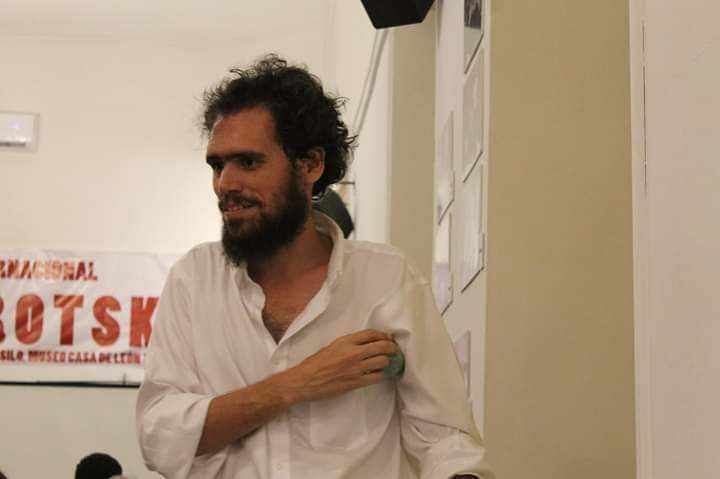
Frank Garcia Hernandez. Organizer of the first international academic event on Leon Trotsky, in Havana.
Behind the US-China Tension
Reasons for Tension Between Washington and China

By Manuel E. Yepe
http://manuelyepe.wordpress.com/
Exclusive for the daily POR ESTO! of Merida, Mexico.
Translated and edited by Walter Lippmann.
Philippe Waechter, Chief Economist with French Company Ostrum Asset Management, published on May 17 last year an interesting analysis of the current tensions between China and the United States.
The French expert explains that Donald Trump’s tweets of May 5 increased tension between Washington and Beijing and re-launched new discussions on the terms of a trade agreement between the two powers.
Chinese retaliation against US imports in response to the new U.S. tariffs calls into question the lengthy period of calm begun after the G20 meeting on December 1st last year.
Trump’s desire to impose new restrictions on China reflects his desire to repatriate jobs, especially in the manufacturing sector, and also to reduce US dependence on China.
In 2018, the U.S. external trade balance with China showed a more than $400 billion deficit.
The counterpart of this Chinese surplus with the United States reflected Chinese financing of the U.S. economy through the purchase of U.S. federal bonds. The logic was that the Chinese products in the U.S. market financed the U.S. economy to compensate for the lack of savings there.
The functioning of the Chinese-American trade was on the basis of complement, but this balance is now changing in nature because China’s weight in financing the US economy has been declining.
In March 2019, the weight of U.S. financial assets in the hands of China as part of the total U.S. foreign funding had fallen to the low level observed in June 2006.
The balance of the relationship between the two countries is changing and the United States no longer has the capacity to influence China as it did in the past. China now has more autonomy, says Waechter.
The White House is impatient over Chinese unwillingness to respond to its requests. By taxing Chinese imports, Washington wants to influence Beijing’s economy by creating strong social tension there that would force the hand of the Chinese authorities who do not wish to take this social risk.
The slow pace of Chinese activity indicators since the beginning of the year could validate Washington’s analysis and encourage it to further harden its commercial tone.
At the beginning of 2019, the weight of the United States in Chinese exports slowed significantly. China’s dependence on the United States is being reversed and, at the same time, the Chinese are re-launching the New Silk Road initiative, whose objective is, among others, to further diversify Chinese markets.
China is now expanding market opportunities and effectively limiting the influence of the U.S. on its internal economic situation.
The other major point of disagreement between Washington and Beijing concerns technology. “It seems to me that this is the main point of the differences between the two countries,” says Waechter.
The Chinese have updated technologically very quickly in the last twenty years. This has been the case both in technology transfers as in resources to facilitate it. And this has worked so well that the Chinese are now considerably ahead of the U.S. in 5G and Artificial Intelligence, among other significant developments.
In this question of technological supremacy, there is a radical change because the Chinese have the means to develop these technologies without American support.
This situation could have arisen with Japan a few years ago, but the Japanese always opted for remaining in the US fold, which is not the case in Beijing –says Waechter– because China has a very large internal market and this them to create conditions for autonomous technological dynamics.
The stakes are simple:
Whoever sets the standards for these new technologies will have a considerable comparative advantage. It will be easier to develop innovations using these technologies. That’s why this is where the negotiations get stuck.
The Chinese have devoted significant resources to achieving this technological advantage and will not fall naively under U.S. control.
This technological stagnation will not be resolved spontaneously, and the possibility of an agreement between the two countries seems unlikely.
“The dynamics of the world economy are changing. This is the first time in modern history that a situation occurs that makes it likely that the world economy moves to a new region due to criteria related to technological innovation.”
When the core of the world economy moved from the United Kingdom to the United States, there was a continuity that does not exist in the current situation. This will alter the dynamics of the world economy and will inevitably redistribute the cards among the regions of the world,” concludes Philippe Waechter.
May 22, 2019.
This article may be reproduced by quoting the newspaper POR ESTO as the source.
Insecure Nuclear Arms Control
Insecure Nuclear Arms Control

By Manuel E. Yepe
http://manuelyepe.wordpress.com/
Exclusive for the daily POR ESTO! of Merida, Mexico.
A CubaNews translation edited by Walter Lippmann.
Last month marked a decade since President Barack Obama declared, standing before a crowd in Prague, the United States’ commitment to seek peace and security in a world without nuclear weapons. However, today we are on the top of that world, but with more weapons, not less.
The future of the United States-Russia Arms Control agreement to reduce the threat of both superpowers instigating a nuclear war –a bilateral tradition that goes back to the governments of Nixon and Brezhnev– looks bleak.
Once that both countries officially abandon the treaty on Non-Proliferation of Intermediate-Range Nuclear Forces (INF) next August, only the New Strategic Arms Reduction Treaty (START) will remain in force as a formal agreement limiting the size and range of the nuclear arsenals between the two major nuclear-weapon states. And as if that weren’t enough, the New START expires in February 2021.
The Trump administration says it is considering extending the new START, but there are reasons for skepticism about this affirmation.
U.S. National Security Advisor John Bolton, who has set standards in the United States by abandoning the Iran’s Nuclear Treaty and the INF Treaty, is a very likely advocate of dismantling the New START as well.
In fact, Bolton has already loudly referred to the participation of the United States in that treaty by calling it “unilateral disarmament”. According to what has been published, Trump himself rejected Putin’s offer to extend the New START during the first official telephone conversation that they held.
Russia is still supposed to be interested in extending the treaty beyond 2021, and President Vladimir Putin has already extended an open invitation for talks with a view to an extension.
The Russian Minister of Foreign Affairs, Sergey Lavrov, expressed a similar interest at this year’s Munich security conference.
Putin manifests his disinterest in bilateral agreements and prefers a multilateral framework based, as he explained in 2012, on the fact that the US and Russia could end up “disarming endlessly while other nuclear powers accumulate weapons.”
But without these agreements, Moscow and Washington could be heading towards a new arms race: a possibility that the Russians and Americans seem to have grasped. (According to a recent survey conducted by the Chicago Council on Global Affairs and the Levada Analytical Center, seven out of ten Russians (72%%) and 70% of Americans fear that their countries will move toward a new arms race.
But there is still room for hope. Most Russians (87%) and Americans (74%) are in favor of reaching an agreement to limit nuclear weapons.
In 1982, three-quarters of Americans favored freezing nuclear weapons production (75%), according to a joint survey by NBC News and Associated Press. Most of the U.S. public also disagreed with Reagan’s assertion that the freeze movement was being manipulated by foreign interests to weaken the country (48%). Reagan soon changed course.
The Nuclear Freeze campaign –which included a million-person US protest calling for an end to the arms race– is considered to have forced Reagan’s hand to begin negotiations with Gorbachev in 1985.
By 1982, three-quarters of Americans were in favor of freezing the production of nuclear weapons, according to a joint survey by NBC News and Associated Press.
Most Americans also disagreed with Reagan’s assertion that the freezing movement was being manipulated by foreign interests to weaken the country (48 %). Reagan soon changed course.
By 1982, the United States had lived 35 years of Cold War. Americans had practiced protection exercises since primary school and most remembered the missile crisis in Cuba and the constant threat of nuclear war.
This partly explains why, despite the support we see among the American people to a new arms control agreement and the sensation that a new arms race looms above our heads, only 54% of Americans opposed the U.S. decision to withdraw from the INF Treaty.
Today, the INF’s decision has been turned into a partisan issue, with 73% of the Republicans supporting Trump’s decision to withdraw and 74% of Democrats who oppose him. The challenge for defenders of arms control today is to break with the partisanship that surrounds the decisions on arms control.
According to Lily Wojtowicz, associate researcher at the Chicago Council on Global Affairs which studies Russian and American public opinion: although 78% of Americans describe Russia as a rival and not as a partner, they all support the search for new restrictions on the nuclear arsenals of the United States and Russia (90 % of Republicans, 89% of Democrats, and 84% of Independents).
May 20, 2019.
This article may be reproduced by quoting the newspaper POR ESTO as the source.
The Bolsonaro Phenomenon May Be Brief
The Bolsonaro Phenomenon May Be Brief

By Manuel E. Yepe
http://manuelyepe.wordpress.com/
Exclusive for the daily POR ESTO! of Merida, Mexico.
A CubaNews translation edited by Walter Lippmann.
“Right now, there’s a good chance that the presidency of Jair Bolsonaro in Brazil, be very brief. The word impeachment is already part of the current language in the media and social networks in the South American giant.”
At least that’s what Andrés Ferrari Haines, a professor at the Federal University of Rio Grande do Sul (UFRGS), Brazil, wrote in an article published, on May 21, by the Argentinean newspaper “Página 12”.
Eduardo Bolsonaro, the president’s son, warned in Buenos Aires that an electoral victory of Cristina Fernandez de Kirchner’s would represent the risk of turning Argentina into another Venezuela.
Curiously, says the newspaper, his father is achieving in Brazil what mercenary Juan Guaidó could not achieve in Venezuela: to have protests everywhere promoting the rule of law and opposition to the President.
An historic march took place on Wednesday, May 15, in which nearly two million people took to the streets in 200 Brazilian cities to protest against the budget cuts in education. It was a turning point in the rejection of President Jair Bolsonaro, his children and several personalities close to him.
Those who, during his electoral campaign, thought that his violent and bellicose style was part of an electoral strategy to attack his opponents are realizing that this is a trait of his personality.
It seems that his capacity for dialogue is zero, and he can only express himself aggressively –even if this might not be his intention.
One could think that Bolsonaro, together with his sons, tried to strengthen his image in a direct relationship with his electoral base, discrediting sectors that were part of the coalition government, such as the military, which occupy several positions in allied political parties.
Even more serious, in the field of the economy, has been the appointment of his “super minister” Paulo Guedes, an extreme neoliberal choice, submissive to U.S. capital, especially to those that seek the extreme exploitation of natural resources and the control of state financial institutions and companies such as Petrobras.
In his strategy, Guedes placed all his chips in favor of the approval of a brutal reform aimed at preventing an “inevitable” economic catastrophe. Here he is meeting great resistance in and out of parliament.
It is a strategy of submission to private activity that launched Minister of Education Weintraub who, summoned by Congress, in the midst of a student protest, made it clear that the objective was not to cut the educational budget, but to extinguish the public education system.
In line with his President, the minister ignored the students and affirmed that “the graduates of the Brazilian public universities don’t know anything.”
Reality, however, has demonstrated the opposite: public schools are at the top of the list in the national ranking –with only two or three private ones– in the front rank. Even more so: the public ones are among the first in comparisons with those in emerging countries, and some have reputable placements at the international level. Thus, it is clear that there is no basis whatsoever for the government project aimed at dismantling public education to the benefit of private education that the minister so much praises.
For his part, Foreign Minister Ernesto Araújo aligned Brazil’s foreign policy to the United States in a moralistic crusade that identifies “globalization” with a process driven by “cultural Marxism” and climate risks with a “communist conspiracy”, even at the expense of losing important foreign markets.
Meanwhile, the economy comes to a standstill, the stock market falls and the dollar soars.
In addition, it has become known that consulting firm A.T. Kearney removed Brazil –for the first time—from the top 25 destinations for the United States investors. During the government of Dilma Rousseff, Brazil was in the third place.
Bolsonaro was losing so much support in the last week that even his “guru,” astrologer Olavo de Carvalho, predicted that he will abandon politics in Brazil.
The Brasil LIbre [Free Brazil] Movement, a great player in the fall of Rousseff and in the anti-PT wave, also announced its breaking up Bolsonaro.
The students are calling for a mobilization on May 30 and, in addition, they have joined the General Strike, on June 14, against Bolsonaro’s reforms.
The main print media, O Globo de Rio and Folha do Estado de Sao Paulo, in their editorials are very critical of the political maneuvers of the President and his attacks on democracy.
Investigations of corruption and illicit association against one of his sons, Flavio, are growing every day, and affect nearly one hundred people who were hired or moved fortunes in connection with his office, including the President’s wife herself.
May 24, 2019.
This article may be reproduced by quoting the newspaper POR ESTO as the source.
“Trotsky’s Work Being Known in Cuba”
 Gabriel García Higueras: “What matters is Trotsky’s work being known in Cuba”
Gabriel García Higueras: “What matters is Trotsky’s work being known in Cuba”
In Havana, we interviewed Gabriel García Higueras, Peruvian researcher specializing in Trotsky’s work.
By La Izquierda Diario México
Tuesday May 14, 2019
Translated and edited by Walter Lippmann for CubaNews
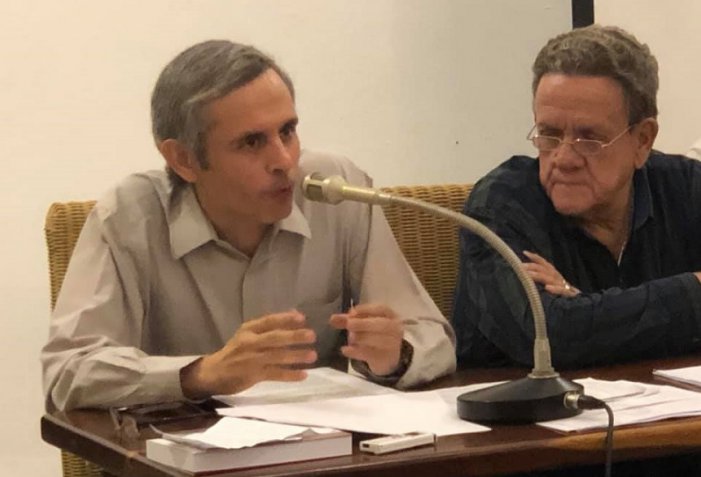
García Higueras is also a university professor, author of Trotsky en el espejo de la historia (Essays), published in Mexico by Editorial Fontamara, and of Historia y perestroika. La revisión de la historia soviética en tiempos de Gorbachov (1987-1991). He is also the author of the Guide to the Museo Casa León Trotsky.
Daily Left (LID): How do you evaluate this event?
Gabriel García Higueras: This is an event of great academic and political importance. It is transcendental that an encounter of this nature has taken place in Cuba. As I said this afternoon, at the beginning of my presentation, since 1990 there has not been an international congress on Trotsky that brings together such a number of presentations and speakers from so many countries. Frank García’s call and organization have been magnificent, as well as the reception he has found in the public. The fact that it takes place in Cuba is unprecedented and will mark a milestone in the research on Trotsky that will be carried out in this country. It should also be noted that the conference is taking place despite not having sufficient organizational support. This is very meritorious and evidences the dedication and commitment of those who have made it a reality.
LID: What is the importance of this taking place in Cuba?
Gabriel García Higueras: Without a doubt, it is very important that this event has been allowed in Cuba, which also reveals a greater political openness to address issues that were previously censored. As is well known, for a long time Trotsky was a taboo figure on the island, since the revolutionary government of Cuba, by aligning itself with the bloc of communist countries, adopted the Stalinist version of his role in the Russian Revolution. Precisely, Leonardo Padura writes about this distorted vision in one of the texts that make up his recent book Agua por todas partes (Tusquets, 2019). So this event is a vindication of one of the essential figures of socialist thought in the twentieth century.
On the other hand, I think it is important that Trotsky’s work be made known to new generations of Cubans. In that sense, the presentation of two of his fundamental books: The Revolution Betrayed and Latin American Writings, will be of enormous importance in this event.
In addition, tomorrow we will have the scoop of world premiere of the documentary on the life of Trotsky in the process of editing, The Most Dangerous Man in the World, by filmmaker Lindy Laub, who has had the historical advice of Suzi Weissman. It is the most complete and best-documented film ever made about Trotsky. And I say this because I saw the trailer at the Leon Trotsky Museum in Mexico nine years ago.
LID: Why don’t you tell us what your participation consisted of?
Gabriel García Higueras: Well, I dealt with Trotsky’s historiographic representation in the Soviet Union during the perestroika. That subject is important because, at that time, a revision of the official history was initiated and, therefore, his figure as the protagonist of the Russian Revolution was recovered. Moreover, this revision allowed the appearance of new historical narratives about Trotsky, some of which are still circulating in Russia.
Due to the fifteen minutes I had for my presentation, I limited myself to presenting the main lines of the subject. I would also have liked to talk about the historical vision of Trotsky in Russia today.
LID: You also presented a book…
Gabriel García Higueras: Yes, this is Trotsky’s second edition in the mirror of history, published in Mexico two years ago. Although I couldn’t bring many copies from Lima, I’m excited that my book will be consulted in libraries by avid Cuban readers.
LID: What about Trotsky today?
Gabriel García Higueras: He is a thinker whose ideas are unavoidable to understand the main processes of the contemporary world. Trotsky reflected and wrote about such a diversity of problems that his ideas always illuminate our vision of reality. Just to cite one example, his theory is key to understanding the Russian Revolution and the historical process that began in 1917. In that perspective, his writings provide us with solid arguments to understand the degeneration of the first workers’ state and the causes for its disappearance.
Interviewed: Pablo Oprinari
You can also read: Trotsky revisited in Havana, Cuba
For a Culture of Animal Protection
 For a culture of animal protection
For a culture of animal protection
By Lizzett Talavera Calvo
Translated and edited by Walter Lippmann for CubaNews
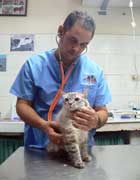
The main veterinarian of the Clinic located in the Quinta de los Molinos ecological park, attached to the Office of the City Historian (OHC), Dr. Leyssan Cepero Fiallo infuses the love he feels for animals to pet owners and colleagues. Under his responsibility various projects for the care of flora and fauna, aimed mainly at children and young people, are implemented. Among the most important actions that the Clinic carries out every year are the campaigns of sterilization and deworming of pets and urban animal colonies. This initiative has contributed to fostering a culture of animal protection in the population of Havana.
“When I was a child, I had all kinds of animals; my hobby was innate. My father took me to the baseball stadium because he wanted me to be a sportsman, but I sat with my back to the field, until he definitely realized I wasn’t going to be a ballplayer,” says veterinarian Leyssan Cepero in this interview.
The main veterinarian of the Clinic located in the ecological park Quinta de los Molinos, attached to the Office of the City Historian (OHC), Dr. Leyssan Cepero Fiallo infuses the love he feels for animals to pet owners and colleagues. Under his responsibility are implemented various projects for the care of flora and fauna, aimed mainly at children and young people.
Among the most important actions that the Clinic carries out every year are the campaigns of sterilization and deworming of pets and urban animal colonies. This initiative has contributed to fostering a culture of animal protection in the population of Havana.
How long have you been interested in animals and veterinary medicine?
When I was a child I had all kinds of animals; my hobby was innate. My father took me to the baseball stadium because he wanted me to be a sportsman, but I sat with my back to the ground until he definitely realized I wasn’t going to be a ballplayer. Even so, I studied karate at a sports school until I reached 12th grade, when I was recruited to the Escuela Superior de Perfeccionamiento Atlético (ESPA).
From a very young age, I knew I was going to study veterinary medicine, so I decided to reorient myself towards that specialty and go to university in what I really liked. At first, the idea was not approved by my family. In spite of that, I took the entrance exams and started my degree at the Agrarian Department of the University of Havana in 2011. In the latter, I stayed in day school for two years until, for personal reasons, I came to live in Havana. I then changed to the course for workers, where I received the title of veterinarian doctor and zoo technician.
While at university, I first worked as a plant and drug group leader at the Centro Nacional de Investigaciones Científicas (CNIC). In my 4th year of graduation, I was proposed to work as a veterinarian in the National Department of Dog Training of the Ministry of the Armed Forces.
Finally, I received a call from Doctor Eusebio Leal proposing that I come to work as the main veterinarian in the Quinta de los Molinos ecological park, as they needed a specialist who knew how to work with all animal species. At that time, I was also vice-president of the Cuban Society of Clinics and Veterinary Surgery, attached to the Scientific Veterinary Council of Cuba. It was thanks to that institution that the Historian of the City received references about my work in that sense. At first, I was not very convinced, so Dr. Leal proposed that I come for a month’s trial and, if I liked it, I would stay. I’ve been here for eight years now.
From the point of view of the veterinary specialty, what do you like the most?
What I do the most are surgeries, because I specialized in Clinic and Veterinary Surgery of all species. In other words, I operate on a turtle as well as a bird, a dog as well as a cat. In the Veterinary Council of Cuba, where I am currently Vice President of Clinica and Veterinary Surgery, we give training courses at a national level to all veterinarians who are interested in working with a diversity of species: reptiles, birds, pets… since specialized knowledge is required for each case.
What motivated you to begin your collaboration with the Spanky Project and, in turn, work with the Civil Society Community, Heritage and Environment of the Office of the Historian?
Since 2004 I began to collaborate with Spanky, when it was still working in the National Department of Dog Training. Every time they carried out a massive sterilization campaign, they summoned me to support them, because they needed target surgeons, so that the animals would come out healthy and without problems after the surgery. When I entered the Quinta de los Molinos I was elected as Spanky’s representative within the Office of the Historian, while the Civil Society Community, Heritage and Environment attends to the project directly by the non-governmental side.
What do you think will be your greatest contribution to the mass campaigns?
The main objective of mass campaigns is to prevent many animals from being abandoned. We have calculated that of every 100 animals you find on the street, approximately 90 percent belonged to a home. For example, a cat can give birth two to three times a year; multiplied by 12, we have almost 60 offspring wandering around the city, and with dogs something very similar happens. During these years, we have reached a large number of sterilized animals, mainly in Old Havana, which is where the project is centered, but we are already extending the reach to other municipalities. Now, through the Office of the Historian, we are able to move to other areas and sterilize animals from “colonies” that we capture with trap cages and then return them to their habitat. It is said that when animals from a colony are sterilized, stray animals no longer enter; in other words, they become controlled colonies. They are also marked to prevent them from being captured again and undergoing surgery.
However, it is not only a matter of implementing sterilization to prevent the proliferation of procreation, but also of educating the population in the handling and care of their pets. Among our educational activities, we conduct workshops with children, taking advantage of the fact that infants can extend their love for animals to their parents and the entire community. Other educational actions are done with respect to the Veterinary University. We receive students in our Clinic from the first to the last year of their studies. There is an agreement between both institutions to promote this exchange.
At the request of Dr. Leal and Perla Rosales, Director General of OHC, our experience has been extended to each of the provinces of the country. Next November we will do a campaign in Sancti Spíritus and, later, in Santiago de Cuba. The objective is not to sterilize animals, but to train the veterinarians who are working there. It is in our interest that groups be created at the national level and that they join the campaigns for World Sterilization Day, observed in all Latin American countries. For the past three years, Cuba has also been observing that day, and in 2018, seven Cuban provinces organized their own days.
Can you define the concept of “colonies”, which you veterinarians use a lot during the campaigns?
By “colonies” we mean the groups of animals that are found in the city; usually in parks, parking lots or other abandoned places. Where there is a colony, there is usually a protective person who provides them with food. That’s why they stay parked in places where they have shade, as well as sources of water and food. In the case of cats, they can roam in several areas, but there is always a common point where 15 to 20 animals live together. This is what happens with other species of felines that live in groups and do not allow another animal to enter their territory.
For this reason, the sterilization of a colony keeps it under control; that is to say, it prevents procreation from continuing. In the case of cats, there is always an alpha male or a female leader, usually the most adult cat, hierarchically structured as a herd. While other females hunt, the males create the defense of the territory; that is to say, it is like a mechanism where each one has a role. As for dogs, there are examples of colonies in the Colón Cemetery and in the Plaza Vieja of the Historical Center. Another case is the pigeons of the Plaza de San Francisco, which tend to group in the fountain located there and usually fly to other open spaces.
Do you believe that through your work an ecological culture has been achieved in the population of the Historical Center?
I think so, since we began our work in the Quinta de los Molinos, we have prioritized educational work. The people who come to us came with different levels of information and, at first, it was a bit chaotic. However, they are now more educated in procedures and rules of behavior, as well as the growing interest in attending the conferences we give to train them. Even Veterinary student comes with an eagerness to improve themselves, since every day we teach them new and important techniques, from the disinfection of an instrument to how to resuscitate an animal after the operation so that it comes out well from the anesthesia. Each one of the doctors has the experience and integral knowledge to work in all the areas. If one of them is absent, any of them can take his place.
One of our greatest achievements is that the second group of students trained at the Clinic since the early years of their careers have already graduated. Some have stayed with us as doctors and others do not stop attending our campaigns. Thus our experience is passed on from generation to generation, guaranteeing the future of this project.
To close, I would like to go a little deeper into what other actions are being carried out by the veterinary clinic at Quinta de los Molinos.
From the Quinta de los Molinos ecological park, we take care of all the animals that are in the Historical Center. For example: the pigeons in the squares; the peacocks located in the museums, and the ornamental birds in the hostels. All these birds receive veterinary attention with monthly check-ups, deworming and blood sampling to prevent zoonotic diseases from entering the country. We also have environmental projects with an extensionist profile, aimed at children and adolescents for the teaching of good practices in the handling and care of animals. For example, we give individual workshops on endemic species and how to protect them by keeping them in cages, including the type of food and veterinary assistance they require.
On the other hand, we make special routes dedicated to wild and exotic fauna within the Quinta. We give courses to the elderly on the responsible ownership of pets, as many have them as pets, and we offer completely free veterinary care services. I have already mentioned the campaigns of sterilization and massive deworming of dogs and cats, but this year even rabbits were sterilized. In fact, we have had to increase deworming to twice a year: we do one on Calle Amargura and the other in Barrio del Santo Ángel. We also do very serious work with the horses that are inside the Historical Center, whose deworming takes place every two months. La Quinta is open from Tuesday to Sunday and every day we have many activities dedicated to children and young people. Perhaps it is the children who show the greatest sensitivity with our work in order to promote a culture of animal protection.
Lizzett Talavera
Opus Habana
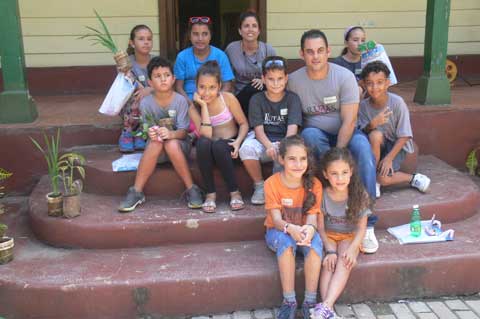
Dr. Leyssan Cepero, main veterinarian of the Clinic located in the ecological park Quinta de los Molinos, together with children participating in a project for the care of the hornamentales plants.
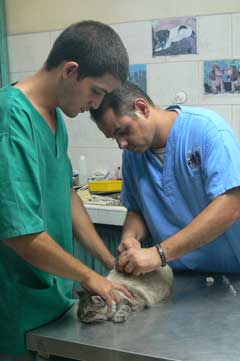
next to his colleague Yoel Machado applying a vaccine to the Bella cat.
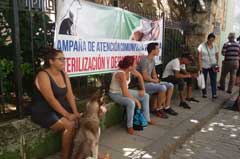
The public attending the deworming campaign on 60 Amargura Street.
Rainbow Flags with Anti-Imperialist Colors
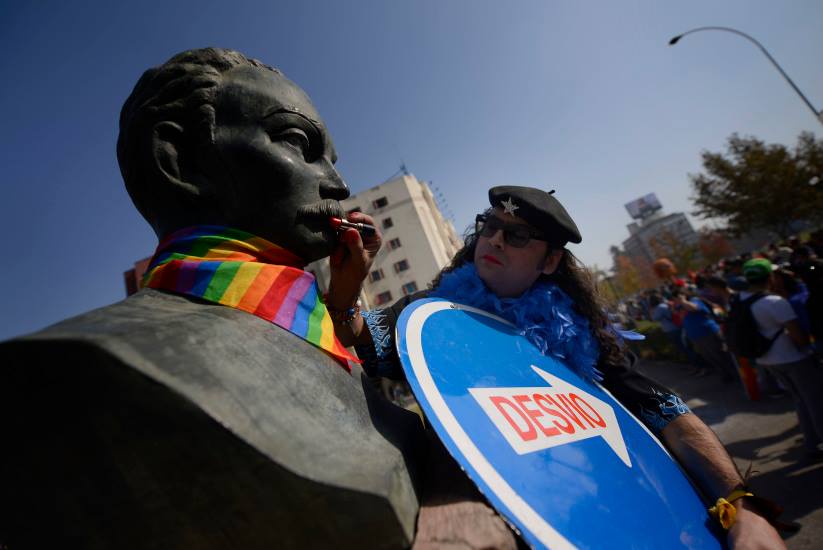
Rainbow flags painted with proud and indelible anti-imperialist colors
Nothing and no one justifies or guarantees arrests just as we do not justify or guarantee that rainbow flags are used by anti-communist opponents who use and abuse our agendas of social-sexual transformation to favor and promote the activities of the external and internal Cuban opposition.
It is reprehensible that a legitimate demonstration for LGBTI rights in Cuba is manipulated by the detractors of the Cuban Revolution and the National Center for Sexual Education hoping -in their dreams- to undermine the arduous, señero and intelligent work of Mariela Castro Espín. Confronting painful expressions published against CENESEX and its leadership, she dialogued in the “Round Table” program of Cuban television, reaffirming the emancipating principles of the Cuban Revolution.
By Víctor Hugo Robles, El Che de los Gays
May 14, 2019
Translated and edited by Walter Lippmann for CubaNews
For more than 10 years, the National Center for Sex Education of Cuba CENESEX has convened and organized the Cuban Days Against Homophobia and Transphobia. It is a popular and important event that includes academic, cultural, social, political and street activities, including the so-called “Cuban Conga” or “Pride March” in neo-capitalist reading, a public demonstration where the LGBTI community of the island travels the main streets of Havana to make their demands visible. Every year, the beautiful capital of Cuba and a provincial city are the scenes of these awaited activities promoted by public institutions of the Cuban State, social organizations, youth groups and sexual diversity networks that work together with CENESEX.
CENESEX is the coordinating center for the national sex education program in Cuba, a valuable and world-renowned institution. It was created in the 1970s as a response to the request made by Cuban women, organized in the Federation of Cuban Women, at its second Congress in 1972.
At that meeting, the women raised the need for sex education for their daughters and sons. Cuban women benefited from the programs of what is now called reproductive health promotion or sexual education. Later, since the 90’s, it was the LGBTI community that was incorporated in the central concerns of CENESEX, particularly with the realization of the Cuban Days, celebrated in May of each year in the context of the International Day Against Homophobia and Transphobia.
Historic Advances in LGBTI Rights
From the beginning, valuable and unprecedented activities have been developed that educate the population, sharing experiences, feelings and information about sexual education, HIV/AIDS prevention and the rights of the LGBTI community that seeks, demands and demands civil rights. Rights that they gradually conquer.
It is remarkable and demonstrable that the work of CENESEX has allowed great advances such as the incorporation into the National Constitution of non-discrimination on the grounds of sexual orientation and gender identity, being the ninth country in the world to achieve this, as well as the institutionalization of comprehensive public policies for LGBTI people and the creation of social and legal guidance devices, the construction of a comprehensive health mechanism for trans persons, including free genital adequacy surgeries, recognition of all forms of family and approval of a transitional clause in the National Constitution that opens the door to equal marriage by eliminating gender binarism, moving from the definition of “man and woman” to “spouses”.
It is not a little, rather a lot, considering the timid advances in LGBTI rights in neoliberal capitalist societies such as ours. The promoter of these actions and director of CENESEX is the renowned sexologist Mariela Castro Espín, daughter of Vilma Espín and Raúl Castro, the most outstanding niece of the mythical Fidel Castro Ruz.
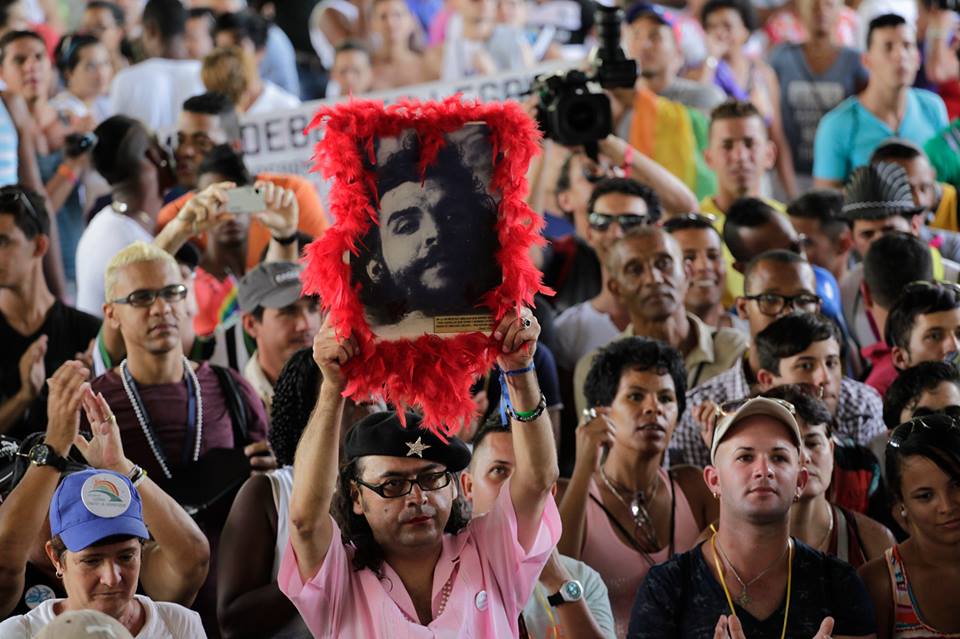
The photo of the dead Che
I was present at the Cuban Days Against Homophobia and Transphobia in 2014. I was a protagonist and witness of the active participation of a diverse community committed to change, added to the refreshing enthusiasm of many young people to participate in CENESEX activities, including the crowded “Cuban Conga”, which in Chile we call “Sexual Diversity March”.
On that occasion, I remember, seeking to run the fence of what was possible and symbolically allowed, I appeared and broke into the march with an emblematic photo of the dead Che surrounded by red feathers. It was a rebellious and daring gesture, typical of the acts I seek and try to star in.
The action did not go unnoticed and provoked diverse reactions and comments, so much so that I had to go up to the main stage at the end of the Cuban Conga to explain the reasons for my intervention, receiving the applause of the present public. There I said that Che’s missing body had been discovered in Bolivia on June 28, 1997, just in time for International Gay Pride Day.
I explained to them that this is why I call myself “The Gay Che” and use the guerrilla star to intertwine desires and revolutions. In Cuba, it was surprising but my action was understood. Nobody censored me, although the foreign press, particularly the Miami correspondents, made a feast with the images of my performance pointing out that “Mariela Castro leads the Gay Pride march with a photo of the dead Che”, thus seeking to generate political repercussions that could affect the image of Mariela Castro and CENESEX.
I did not fall into the trap of that mercenary press and I shared my reasons with my comrades who listened to me with affection. “Life is necessary with irreverence,” said our beloved and unforgettable Gladys Marín in Chile, generously valuing the actions of “El Che de los Gays.
I relate this episode because I can attest to the respectful work of the friends of CENESEX, especially Mariela Castro Espín, who, beyond the legitimate pain and discomfort caused by seeing the photo of the dead Che in a public march of sexual diversity in Havana, understood the deepest and most political meaning of my crazy staging. I’m always opening paths of fraternal and internationalist dialogue in a besieged rights revolution that is built and rebuilt every day.
Some time later Mariela was in Chile and together with other local sexual diversity activists we shared with her these crazy experiences, projecting the struggles of the LGBTI community in Cuba and Chile. Since the 1970s with President Salvador Allende en la Moneda, the friendship between Chile and Cuba has been part of our political history and that includes the history of sexual diversity movements.
The “independent” march
The deplorable events that took place in the self-proclaimed “independent” LGBTI march of last Saturday, May 11, appear as the other side of a complex process of changes and transformations that the LGBTI community in Cuba is living and promoting. Although it was a march or walk that could be understood as legitimate and even fair due to the controversial cancellation of the official Cuban Conga, its convocation, its organizers and the media repercussion that the international press encouraged make us maintain that it was a staging studied and prepared.
It wasn’t from CENESEX, but from the U.S. Embassy in Havana, an office that did not hesitate to send its diplomats to cover and participate in the “independent” march. The U.S. Embassy in Havana itself publicly unmasked itself by writing on its official Twitter account: “We closely observed that #The Alternative March began peacefully, but then there were aggressive arrests. The regime denies the Cuban people their fundamental rights. We are with the people of Cuba.
The blatant declaration of the imperialist diplomacy of Donald Trump’s government says “it is with the people of Cuba” but omits that the United States maintains and deepens a condemnable and inhuman economic blockade of almost 60 years that punishes not only the Cuban “regime”, as they call the Cuban Revolution in the U.S., but an entire people.
It’s a condemnable economic blockade that Trump wants to extend to the unimaginable, including a criminal and unprecedented maritime blockade around Cuba, the largest island of the Antilles.
From my social networks I saw this transnational political operation confirmed by reliable checks and information received from Havana, unleashing various comments, criticisms and condemnations of my right to critical expression, the same freedom that my detractors demand but that they neither apply nor recognize for others.
On the night of May 11, after seeing various videos, photos and images, studying the public profiles of the organizers and gathering background information from Cuba, Chile and Argentina, I wrote my legitimate opinion on Facebook, being replicated directly by Mariela Castro Espín.
My convinced and informed text said: “Advances in the rights of LGBTI communities always have contradictions. It moves forward steadily, stops momentarily, and sometimes seems to backtrack. The images of the diversity march on the streets of Havana this Saturday, May 11, 2019, hide not only the legitimate desire for greater spaces of rights for all, but also the staging of an orchestrated operation that seeks to question the unique and indispensable work of Cuba’s National Center for Sex Education CENESEX.
The freedom that is publicly demanded is twinned with support for the US invasion of Venezuela and the political-media destabilization of left-wing governments in Latin America and the Caribbean. The indelible colors of our rainbow are proudly painted with anti-imperialist brushes.
Written with accurate information, contrasting the headlines of the international press, I recognized and valued the important work of CENESEX, transforming my opinion into a wall of hurried and unfounded regrets, criticisms and accusations such as those that indicated that I justified violence and arrests.
Nothing could be further [from the truth] than to argue and endorse arrests, as I have always demanded in Chile when students, young people, women and Mapuches are arbitrarily and unfairly arrested. Neither CENESEX, nor Mariela Castro, nor Vicente Feliú, nor Silvio Rodríguez, much less the LGBTI activists of the world that we see (and feel) with concern how they seek to discredit the historic work of Cuba’s National Center for Sexual Education and the virtuous leadership of Mariela Castro Espín.
Nothing and no one justifies or guarantees arrests just as we do not justify or guarantee that rainbow flags are used by anti-communist opponents who use and abuse our agendas of social-sexual transformation to favor and promote the activities of the external and internal Cuban opposition.
It is reprehensible that a legitimate demonstration for LGBTI rights in Cuba is manipulated by the detractors of the Cuban Revolution and the National Center for Sexual Education hoping -mistakenly- to undermine the arduous, señero and intelligent work of Mariela Castro Espín who, confronting painful expressions published against CENESEX and its leadership, dialogued in the “Round Table” program of Cuban television, reaffirming the emancipating principles of the Cuban Revolution.
Francisco Rodriguez Cruz, an LGBTI journalist from Cuba, an active blogger and an important sexual diversity activist on the island, wrote a heartfelt column on his personal blog, “Paquito el de Cuba,” lamenting the facts and pointing out the text:
“The negative repercussion of these events demonstrated that the march was not a success, as those who defend their anti-government agendas more than our rights as LGBTI people say, but a serious error that we could pay with a very high cost of splits, extremisms and setbacks in future dialogue processes, if we are not capable of critically analyzing what happened and thus draw lessons to overcome it.
Like “Paquito,” assuming attacks and misunderstandings for openly distrusting the motivations of the organizers of the event and carrying out a critical analysis of the political-public repercussions of the spectacular public event, I decided to take an open position against a new attack on the Cuban Revolution and all its brave people.
It would have been simpler and more comfortable to remain silent enjoying the local capitalist comfort as fellow activists and sexual diversity organizations who prefer political and ideological neutrality have done.
It is not the time for neutrality, doubts, or silences, much less fear of denouncing the blows of the empire infiltrated in our diverse cultural and sexual struggles. In the current regional political and ideological scenario, the U.S. government seeks to stick its noses and military troops in Venezuela, our beloved Cuba being the final objective.
I raise my voice to warn against the use of multiple destabilizing imperialist strategies, including flying the flags of sexual diversity, longing to destroy the revolutionary utopias of left-wing governments in Latin America and the Caribbean in times of right-wing advance in the region.
From Santiago de Chile, remembering and thanking the generous and infinite solidarity of the Cuban people with our own people in past times, I send my affectionate embrace to all those Cuban brothers and sisters, comrades and comrades who fight every day to defend a courageous revolutionary journey. The time has come to raise and wave with more strength the rainbow flags but painted with proud and indelible anti-imperialist colors.
“In Cuba We Needed Trotsky”
THE LEFT DAILY MEXICO
May 19, 2019
“In Cuba we needed Trotsky to understand what happened in the Soviet Union.”
Pablo Oprinari interviewed Frank García Hernández, organizer of the recent “First International Academic Event on Leon Trotsky”, held in Cuba, in which the Leon Trotsky Center for Studies, Research and Publications (Argentina-Mexico) participated.
Translated and edited by Walter Lippmann for CubaNews.
IdZ What is your assessment of the Trotsky event held in Cuba?
FG: I always thought that the event was going to mark a before and an after. I know that if we had done it in Brazil or Mexico -countries where it is possible that the 2nd and 3rd edition of this meeting will take place- it would not have been the same, because, although we have not had much financing due to all the economic problems that Cuba has, we did achieve a very large international participation, with high-level presenters such as Robert Brenner, Paul LeBlanc, Susy Weissman or Eric Toussaint, You have come [CEIP León Trotsky, N del E], those from the Karl Marx Center for Socialist Studies, the Casa León Trotsky Museum, researchers from the three most important universities in Brazil have arrived, participants and academics have come who at other times are not meeting because of the traditional disputes that their political organizations have, but who come because Cuba is everyone’s land and nobody’s.
Trotsky, Cuba and the current situation in the country have brought people from all over the world: from India, Iran, Turkey, Italy, Austria, Germany, France, Great Britain, Argentina, Canada, Spain, the United States, Mexico, Peru, Venezuela, Brazil, intellectuals from Colombia and Pakistan, who were finally unable to attend, Michael Lowy and Tariq Ali also wanted to be present and at least ten other exhibitors. The event, in fact, should have lasted four days, but it was impossible, almost impossible, and cannot leave. We had a very difficult logistical situation so we couldn’t receive a foreign audience. I hope you understood and didn’t bother with us. To those of us who asked them not to come, we never did so for political reasons, much less for personal reasons. If we had accepted the 192 applications for public participation we would have collapsed, in fact, you saw that in the room where we were, they would not have had space.
The only thing I didn’t like about the event is that there wasn’t much Cuban public, which I think was due to bad management, it’s our responsibility, and that could give the false idea that in Cuba there is no will to meet Trotsky. Moreover, the lack of time caused the program not to be ready for the first day.
But the event, for me, in spite of its problems, is a total advance. In addition, the Institute of Philosophy undertook to publish the memoirs of the event, an institute that if it had not been for him we would not be here today. We must also thank the director of Casa Benito Juárez, where this congress was held. And we would also like to thank the logistical support given to us by the Juan Marinello Cuban Institute of Cultural Research, which also seems to be preparing to collaborate in the publication of the memoirs.
If this is done, if this book is published, it would be the first time that a book dedicated to Trotsky and the sociopolitical-cultural phenomena that has been generated around him would appear in Cuba. Trotsky’s other text that appeared, as a book, was published in the sixties by the militants of the Revolutionary Workers’ Party (Trotskyist), who were militants in the Fourth International Posadista. That book did not travel around the country because it was confiscated and never went to press.
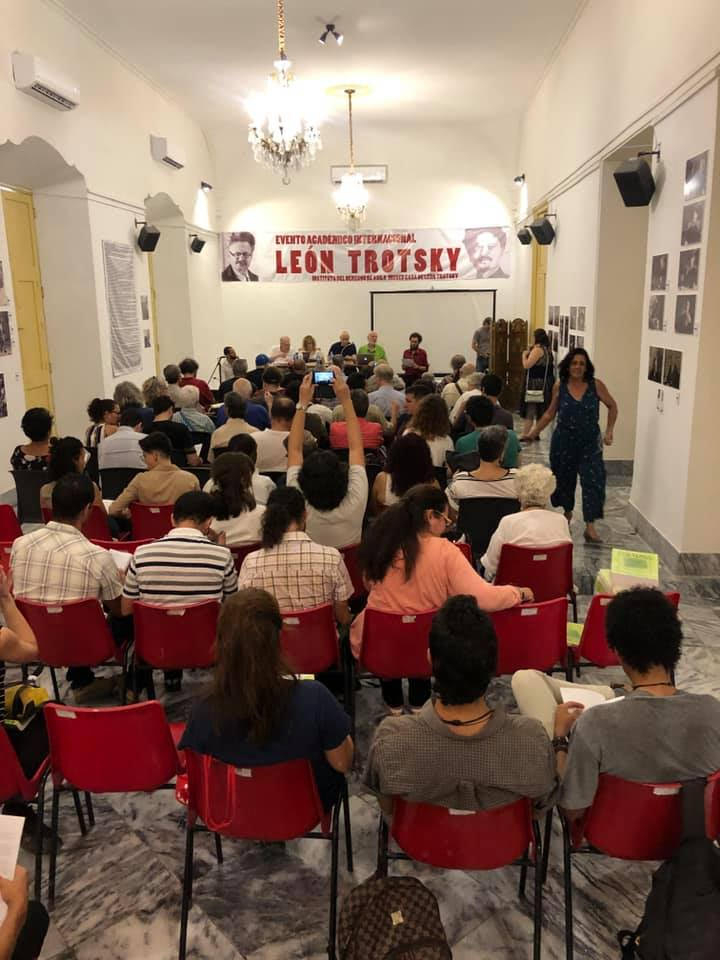
Were other articles or materials by Trotsky published?
FG: In Cuba, only the following articles by Trotsky have been published without suffering censorship: one in the Revolution newspaper, of the 26th of July movement, in the cultural supplement “Lunes de Revolución” where a very short excerpt from the History of the Russian Revolution, published by Guillermo Cabrera Infante, appeared. That was in 1960.
Later, in 2014-2015, “Lenin’s Last Struggle” was published in Cuba, a compilation of Lenin’s writings and letters, which was originally published by Pathfinder Publishing, which ceded its rights to the Social Sciences Publishing House; there appeared some letters from Trotsky to Lenin. And after I taught the postgraduate course on Leon Trotsky, in November 2016 – the first in Cuba and had a great impact on the student body – almost two years later, in January 2018, the centennial of the Red Army, part of Trotsky’s speech at the founding of the Red Army was published in a Santa Clara cultural magazine.
So now, when we publish this book, we are going to live in Cuba a before and an after, because when all the presentations that were made are published, we are going to skip the political taboo that is Trotsky. With Trotsky in Cuba something very similar happened to what the Peruvian writer Héctor Béjar says in his book, which was awarded the Casa de las Américas Essay Prize in 1966, when he stated that after the 20th Congress of the CPSU, we all knew about Stalin’s crimes but nobody told us that the one who was not a criminal was Trotsky.
And the same thing happened in Cuba: after the fall of the Soviet Union, we all knew about Stalin’s crimes, but no one here has said that Trotsky was not guilty of what he was accused of. That is the importance of the event. To begin to say in Cuba that nothing that was said about Trotsky is true. And Trotsky is not even mentioned in the history books that students receive. Maybe the university students know him, but it’s very difficult for high school students to know about him.
Without a doubt, Padura’s work, The Man Who Loved Dogs, helped arouse curiosity, but they have no book to go to cover the doubts and learn more. On the other hand, friend and comrade Celia María Hart Santamaría could not successfully spread Trotsky[‘s ideas] in Cuba. Circumstances made her end up being a sniper on the roof of a tower. No one saw her, no one could see her, even though they felt her shots, accurate, very accurate.
IdZ: They talk about the dynamics of the event and the first repercussions.
FG: The academic level is very good, excellent, there is no complaint. We have to thank everyone for their presence. There was even the collaboration of Lindy Laub, a well-known North American filmmaker, who had participated in the Festival del Nuevo Cine Latinoamericano, here in Havana in 1999, and Suzi Weissman, her producer, who in turn was a speaker. They both brought a documentary that we enjoyed the 42-minute work-in-progress, The Most Dangerous Man in the World with unpublished images that no one has ever seen. We did this in a small but very collaborative room of the Young Directors Exhibition. Unfortunately, there weren’t many Cubans, but the important thing is that it was projected in Cuba.
What is real is that Trotsky, as a historical character has had an impact on sectors of the Cuban university student body, since students from Santiago de Cuba wanted to come to the event, they came from Santa Clara without even having the economic conditions, they came from Matanzas. Today in Santa Clara and Havana there are students who are reading and studying the books that you and other comrades brought to the event. For them, for those Cuban students, I ask for the most solidary of the help. They have only two titles. So I call on internationalism to send them material, magazines, books.
Escritos Latinoamericanos is, moreover, a text that has impressed some Cuban historians very much, because we had never been able, or even knew, that León Bronstein had dedicated political analysis articles to the Cuban situation of his time and especially to the Bolshevik Leninist Party. For me, who wrote the history of Cuban Trotskyism, that is a fundamental contribution. Another important point is that this Friday Latin American Writings will be donated, along with the text by Gabriel García Higueras, Trotsky in the mirror of history, to the library of the House of the Americas, the institution that attracted intellectuals such as Cortázar, Benedetti, Galeano and that today continues to be one of the best points of convergence on the continent. This library is very much visited by the Havana intellectuals. Also this Friday, May 17, Writings… will arrive at the libraries of the Faculty of Philosophy and History, and at the Central Library of the University of Havana.
I always make a very necessary clarification: the event was an academic activity about Trotsky and all the political, social and cultural phenomena that came out of it. It was not a call for international Trotskyist convergence. The perception that we young people have that we feel part of the Cuban Marxist left, that we use Marxism to understand reality, is that Trotsky belongs to the system of communist ideas, to all the theory that Gramsci, Rosa Luxemburg, Lenin, Marx, Mariátegui give us. Some bureaucrats want to point out Trotskyists to us; I have nothing against Trotskyism, evidently, yes, some necessary and enriching divergences of criteria, but let’s remember that Stalin began to use that term to make believe that the followers of the Left Opposition were not Leninist Bolsheviks, but a tendency alien to the revolution.
We were missing Trotsky. We lacked Trotsky to understand what happened in the Soviet Union, because none of the referents of Marxism that I mentioned, as well as Che Guevara or Fidel Castro, could, for different reasons, give a systemic explanation of what happened. Trotsky has the courage to have done so since 1936, the courage to have developed a sociological analysis that we didn’t know about, and for which we Cubans are very interested.
Subscribe to Blog via Email
| M | T | W | T | F | S | S |
|---|---|---|---|---|---|---|
| 1 | 2 | 3 | 4 | |||
| 5 | 6 | 7 | 8 | 9 | 10 | 11 |
| 12 | 13 | 14 | 15 | 16 | 17 | 18 |
| 19 | 20 | 21 | 22 | 23 | 24 | 25 |
| 26 | 27 | 28 | 29 | 30 | 31 | |
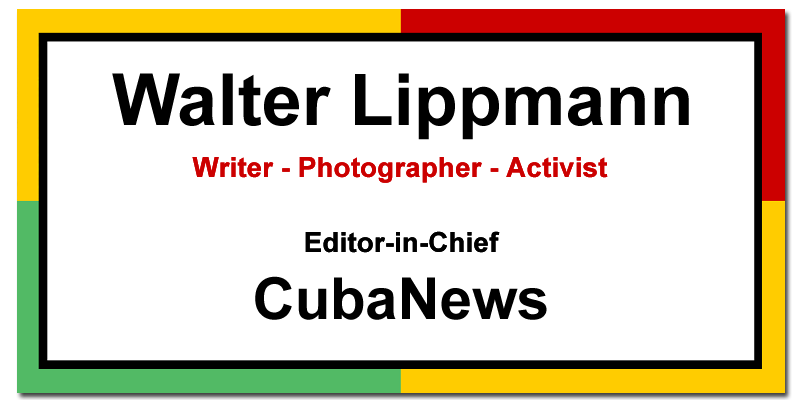
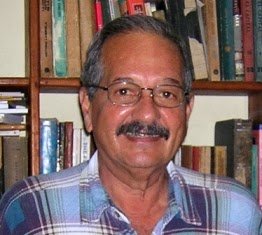

You must be logged in to post a comment.